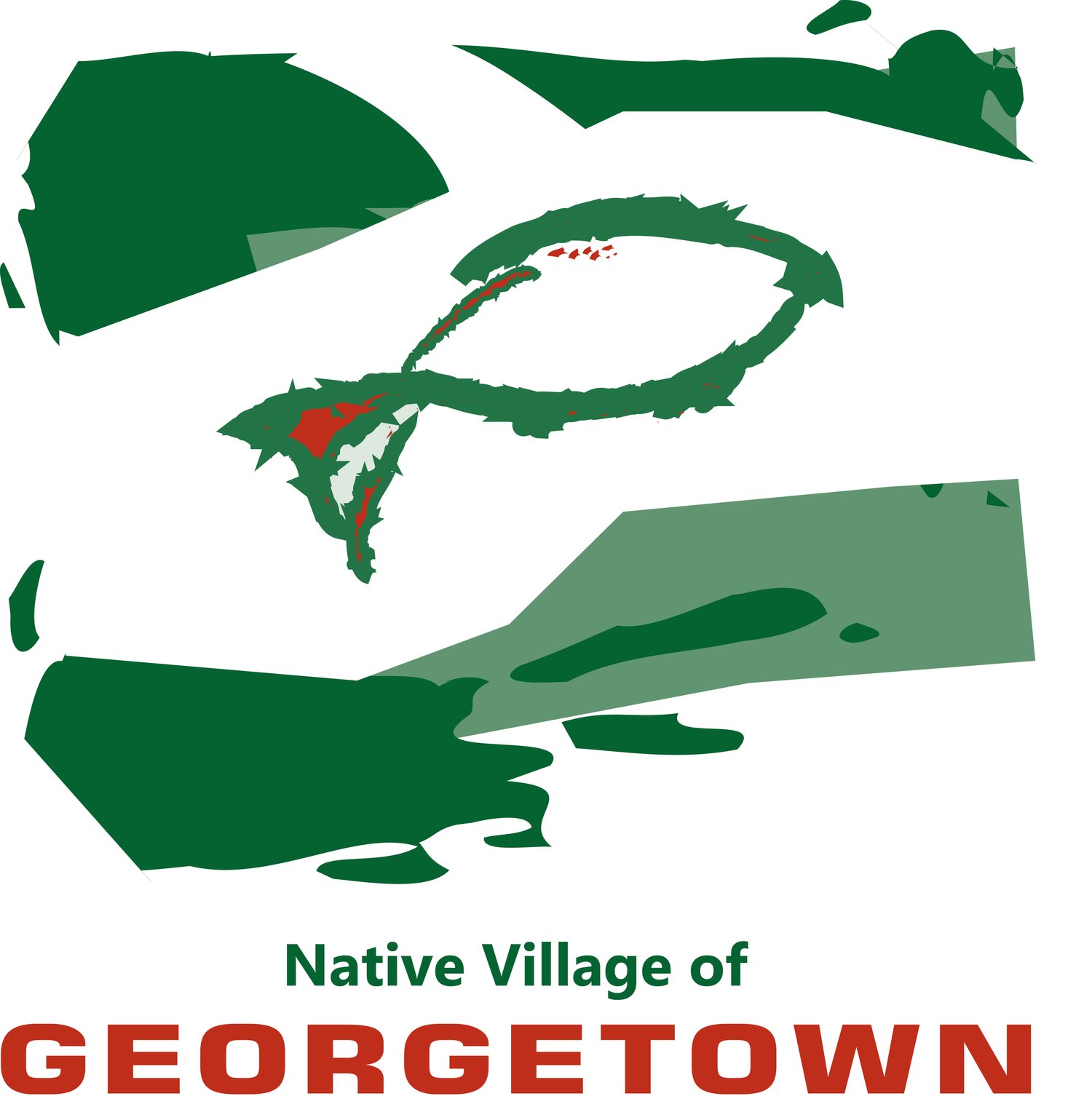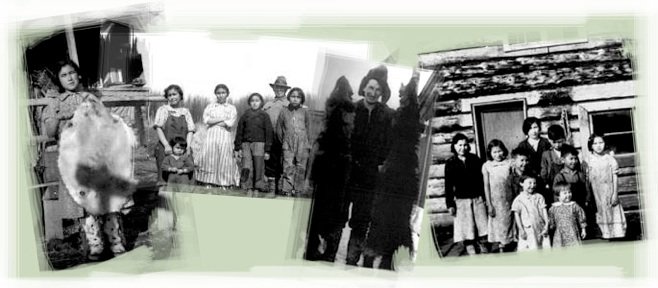
To ensure the best quality of life for all Native people of the region, now and for future generations
About Us
Georgetown is located on the Kuskokwim River, in the Kilbuck-Kuskokwim Mountains, at its convergence with the George River. Georgetown Tribal Council (GTC) is the governing body for the federally recognized tribe of the Native Village of Georgetown, Alaska. Under the Alaska Native Claims Settlement Act (ANCSA) of 1971, 38 individuals enrolled, securing GTC’s status as a federally recognized tribe. GTC has since enrolled children of original descendants, which brings current tribal membership to about 150.
Though the enrollees are scattered for economic reasons, they retain a strong connection to their land and desire to repopulate Georgetown. As mining declined, members were forced to leave Georgetown due to lack of employment opportunities. Many of our members still live in the area, in other nearby Kuskokwim River villages or in Bethel. It wasn't until the passage of ANCSA and the opportunity to take ownership of ancestral lands, that former Georgetown residents and their descendants had an opportunity to plan to move back home.
The Kuskokwim Corporation (TKC), the village corporation for the Native Village of Georgetown, was formed on April 25, 1977, when ten ANCSA village corporations within the Middle Kuskokwim region, including Georgetown Incorporated, merged. TKC owns most of the surface estate of the land surrounding the village of Georgetown. Most members of Georgetown are shareholders in TKC. The Kuskokwim Corporation's mission is to pursue economic opportunities that ensure the profitability and growth of TKC, while protecting heritage, informing shareholders, and promoting education amongst our present and future generations.
The Calista Corporation is the ANSCA regional corporation for the Native Village of Georgetown Calista owns most of the subsurface estate of the lands surrounding the village of Georgetown and most Georgetown members are Calista shareholders.
History
The Middle Kuskokwim area first experienced contact with European civilization when the explorer Zagoskin sailed upriver to the vicinity of McGrath in 1844. At the time, Georgetown was known as Keledzhichagat, the site of summer homes for peoples of the nearby village of Kwigiumpai- nukamuit. In 1909, gold was found along the George River near Georgetown, and a mining settlement was formed. Both the river and the settlement were named for the first three traders at the site: George Fredericks, George Morgan and George Hoffman. By the summer of 1910, about 300 prospectors were living in the vicinity. In July of 1911, a fire swept through the settlement, destroying all but 25 of 200 log cabins. Also saved were two general stores in town. By 1953, the only large structure that remained at the site was a two story house that belonged to George Fredericks.
In the 1950’s, a second settlement, also called Georgetown, began emerging on the opposite side of the George River from the earlier community. A state school was established in 1965 and remained until 1970. (Taken from Georgetown Community Profile)
As mining declined, Georgetown members were forced to leave the area due to lack of employment opportunities. It wasn’t until the passage of ANCSA in 1971 and the opportunity to take ownership of ancestral lands, that former Georgetown residents and their descendants had an opportunity to move back home.
Land
In 1998, Georgetown Tribal Council (GTC) had an all-member meeting in Georgetown, and members agreed that it was time to begin village resettlement. Reasons for resettlement stem from a unique blend of traditional and contemporary value. By re-establishing the traditional village, GTC hopes to perpetuate the cultural identity, survival, and well-being of its contemporary tribe. For many of the original members, Georgetown is their birthplace; the place they grew up, their shared identity, and for those generations to come, it insures the sustainability of that identity and the strength and support of a network of community. For all, Georgetown is the fundamental definition of who we are, the constant source of individual and communal pride.
Since beginning the 14(c)3 transfer, Georgetown Tribal Council has been moving quickly towards the goal of resettlement. Sixteen Georgetown members have applied to the State for housing lots. As soon as members are granted a permit for entity, home building will begin.
Under section 14(c)3 of ANCSA, The Kuskokwim Corporation was obligated to reconvey up to 1,280 acres to the State of Alaska in Trust for the future municipality of Georgetown. Though the property is transferred to the State of Alaska, GTC has been officially designated as the “Appropriate Village Entity” by the State, acknowledging the Council’s ability to represent the collective views of Georgetown member’s and empowering GTC to approve land transactions by the State with respect to the village. Should the residents of Georgetown elect to incorporate as a municipality at some future time, the ownership of the land would be transferred to the governing body of the municipal corporation.
The Kuskokwim Corporation, with the concurrence of the GTC and the State of Alaska, filed a Plan of Survey with the Federal Bureau of Land Management (BLM) to reconvey 640 acres to fulfill this obligation. BLM surveyed the proposed reconveyance in the summer of 2001, and the property was transferred to the State of Alaska Municipal Trustee.
To prepare for the 14(c)3 land section process, GTC began to acquire and produce useful and current information about the area in and around the village. In the summer of 2000, through grant funding from the Administration of Native Americans and the Bureau of Indian Affairs, GTC commissioned McClintock Land Associates to produce aerial photography and topographic maps of Georgetown. As a supplement to these maps, the U.S. Department of Agriculture’s Natural Resources Conservation Service (NRCS) surveyed and mapped local soil conditions and vegetation. The resulting data was used for community master planning purposes and to make informed decisions on the selection of community lands.





